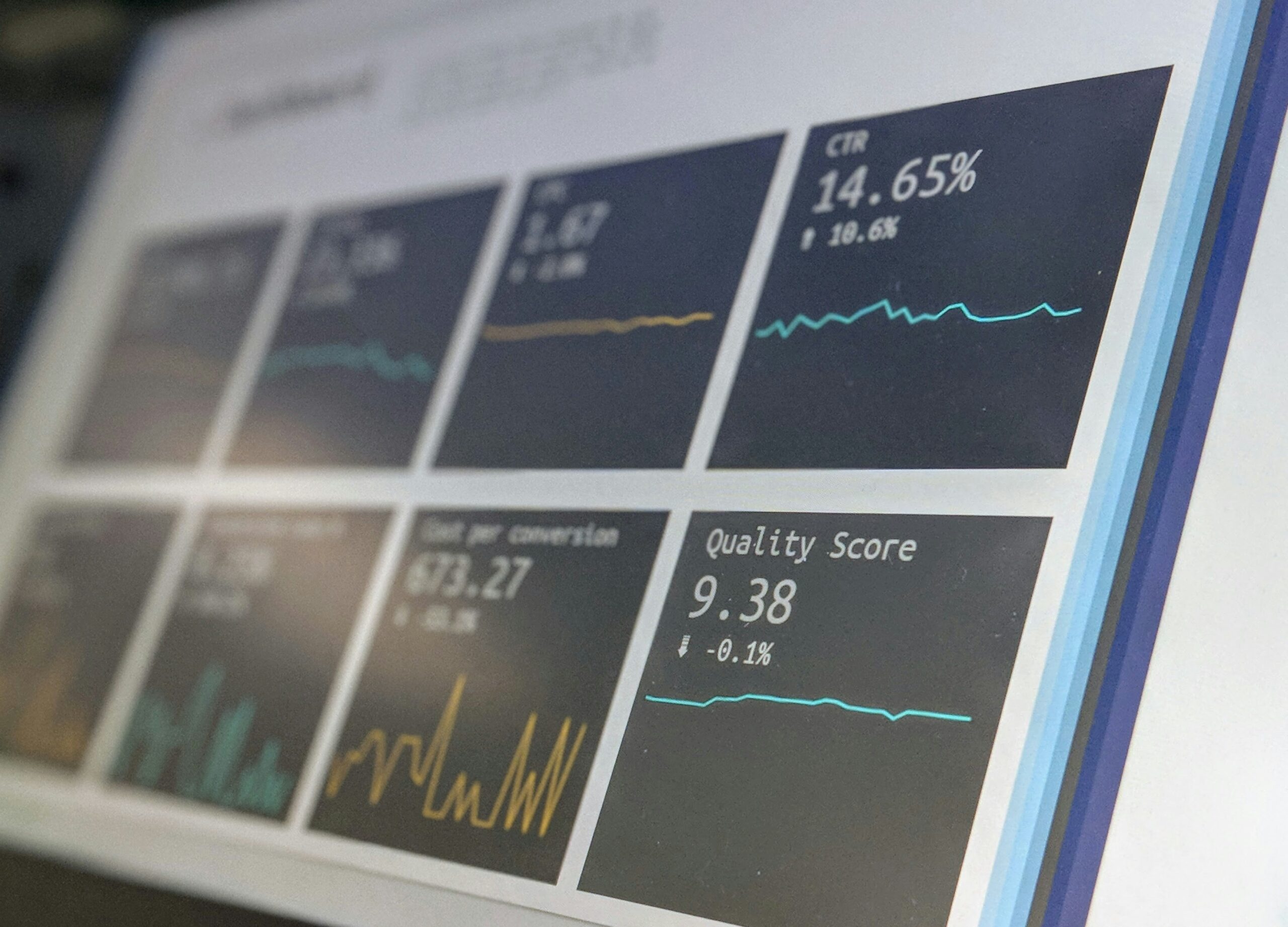In today’s digital space, SEO-focused content development is essential for businesses aiming to boost their online visibility. It’s not just about ranking higher—it’s about delivering content that aligns with user intent, search engine algorithms, and brand goals. From keyword research to structured data and content optimization, each element plays a role in driving sustainable growth. With the right strategies, businesses can attract organic traffic, enhance customer engagement, and build long-term credibility. At Day by Day Digital (DXDD), we help brands craft optimized content that converts and performs. This blog unpacks the process, tools, and techniques behind successful SEO content development.
Key Takeaways
- SEO-focused content helps businesses attract high-quality traffic by aligning written material with search engine algorithms and audience intent.
- Comprehensive keyword research and semantic structuring are essential for creating content that ranks well and meets user expectations.
- Incorporating visuals, infographics, and Schema.org markup enhances engagement, improves indexing, and increases visibility in search results.
- On-page SEO practices like metadata optimization, internal linking, and mobile responsiveness strengthen user experience and boost authority.
- Consistent performance tracking and content updates help maintain relevance, improve rankings, and support long-term digital growth.
Let me know if you’d like these even more tailored to a specific DXDD service offering!
What Is SEO-Focused Content Development and Why Does It Matter?
SEO-focused content development is the planning, creation, and optimization of digital content to meet SEO best practices and improve search engine rankings. Well-optimized content attracts high-quality traffic, boosts brand awareness, and increases conversions and revenue. By focusing on semantic precision and query responsiveness, businesses ensure that their content aligns with both user intent and search engine algorithms, leading to improved visibility and a better overall user experience.
How Does SEO-Focused Content Improve Search Engine Rankings?
SEO-focused content improves rankings by incorporating relevant keywords, metadata, and structured data that search engines can easily interpret. The integration of natural language processing strategies and semantic markers helps search engines understand context and relevance. A well-optimized page is indexed effectively and ranks higher because search engines deliver the most engaging results, boosting click-through rates and user retention.
What Are the Key Components of SEO-Focused Content Development?
Key components include:
- Keyword Research: Identifies high-value and long-tail terms that users query.
- Competitive Analysis: Highlights differentiation opportunities.
- Semantic Structuring: Organizes content for easy search engine interpretation.
- Metadata Optimization: Uses concise, relevant descriptions and title tags.
- Internal Linking: Improves navigation and distributes link equity. Together, these elements ensure that content ranks well and provides value to readers.
How Does User Intent Influence SEO Content Strategy?
User intent shapes topics, tone, and presentation based on what users are actively seeking. Content designed with a specific intent—be it informational, navigational, or transactional—better meets user needs, reducing bounce rates and increasing engagement. Data-driven insights allow companies to craft articles that align with specific user queries and expectations.
How to Build an Effective Content Strategy for SEO Success

An effective content strategy for SEO success starts with clear goals, understanding the target audience, and aligning content with user intent. This strategy creates a roadmap for producing and promoting content that drives organic traffic and conversions while addressing content gaps, market trends, and competitive positioning.
What Are the Steps to Define Goals and Target Audience?
The first steps include: – Establishing clear objectives such as increasing organic traffic, boosting engagement, or driving conversions. – Conducting market research and audience analysis using tools like Google Analytics, surveys, and social media insights to define demographics, interests, and consumption habits. This process ensures that content creation aligns with user preferences and supports business objectives.
How to Incorporate User Intent Into Your Content Calendar?
Incorporate user intent by mapping out topics that address common queries. This involves:
- Conducting thorough keyword research and competitive analysis to identify prevalent search phrases.
- Prioritizing topics with clear intent—informational, transactional, or navigational—and scheduling them with appropriate promotional activities.
- Regularly integrating user feedback and performance metrics keeps the content relevant and engaging.
Which Tools Help With Content Planning and Keyword Research?
Tools such as Google Keyword Planner, SEMrush, Ahrefs, and Moz provide data on search volume, competition, and related keyword suggestions. Project management tools like Trello and Asana help organize a content calendar, while platforms like Answer the Public generate ideas based on common user queries. These tools support data-driven content strategies aligned with user intent and market competition.
How to Conduct Keyword Research for SEO-Focused Content Development
Keyword research is the cornerstone of SEO-focused content development. It systematically identifies and analyzes the search terms users enter into search engines to create content that meets their queries and improves rankings. Accurate research ensures that content aligns with current trends, capturing relevant traffic and meeting user expectations.
What Are the Best Keyword Research Techniques and Tools?
Effective techniques include:
- Competitor analysis and long-tail keyword identification,
- Search volume analysis and trend forecasting using tools like Google Trends, SEMrush, Ahrefs, and Google Keyword Planner provides insights into high-volume, low-competition keywords.
- Incorporating user-generated content and social media query analysis can also uncover niche topics that attract targeted audiences.
How Do Long-Tail Keywords Enhance Content Relevance?
Long-tail keywords target specific, less competitive search phrases that directly address user intent. They tend to be longer and more detailed, which helps tailor content closely to user queries. This focus not only caters to niche audiences but also reduces competition from broader terms, thereby improving conversion rates.
How to Analyze Competitor Keywords for Content Opportunities?
Analyze competitor keywords by reviewing the terms and phrases similar websites rank for using tools like SEMrush or Ahrefs. This analysis helps identify gaps in your content and uncover high-potential opportunities. Reviewing meta tags, headings, and content structures of top-ranking pages allows content creators to refine target keywords and focus on underserved queries.
How to Create SEO-Friendly Content That Engages and Converts

Creating SEO-friendly content requires balancing technical optimization with reader engagement. This means crafting text that is rich in relevant keywords and semantic context while remaining informative and user-friendly so that it attracts search engine traffic and converts visitors by addressing their needs effectively.
What Are the Best Practices for Writing SEO-Optimized Blog Posts and Articles?
Best practices include: – Using clear, concise language and incorporating target keywords naturally, – Structuring content with logical headings and bullet points, – Starting with an engaging introduction that immediately addresses the query followed by supportive evidence and examples. Consistent tone and quality, along with proper formatting such as meta descriptions, alt attributes, and internal/external links, ensure that content remains effective.
How to Use Visuals Like Infographics and Videos to Boost SEO?
- Visual elements such as infographics and videos enhance SEO by increasing engagement and reducing bounce rates.
- Infographics simplify complex data into digestible visuals, while videos add contextual depth.
- Including proper metadata, like alt text and descriptions for images and videos, helps search engines understand the context, boosting overall visibility and encouraging social shares and backlinks.
How Does Entity-Driven Content Improve Semantic Relevance?
Entity-driven content ties topics to recognized concepts, people, places, or events and often includes structured data (e.g., schema markup). This linkage helps search engines contextualize content, leading to richer search results and a higher likelihood of featuring in prominent snippets. Emphasizing recognized entities builds an authoritative narrative that enhances both trust and visibility.
How to Optimize Content Using on-Page SEO and Structured Data

On-page SEO and structured data optimization are crucial for ensuring that search engines accurately interpret and rank content. On-page SEO involves adjusting meta tags, headings, content quality, and internal links according to best practices. Structured data from Schema.org provides search engines with explicit clues about the content’s context.
What Are the Essential on-Page SEO Elements for Content?
Essential elements include:
- Title tags, meta descriptions, header tags (H1, H2, H3…), and alt attributes for images.
- Strategic keyword placement within the text.
- A readable URL structure and effective internal linking.
Together, these components signal to search engines what the content is about, improving indexing and ranking.
How to Implement Schema.org Markup to Enhance Search Visibility?
Adding Schema.org markup to your HTML code helps search engines understand your webpage better by providing details about articles, products, reviews, and organizational data. Including properties such as “name,” “description,” “image,” and “aggregateRating” can enhance search visibility and increase the chances of obtaining rich snippets, which improve click-through rates.
What Are the Best Internal Linking Strategies for SEO Content?
Effective internal linking involves:
- Linking to related content within your site using natural anchor text
- Organizing high-priority content in a hierarchical structure
- Regularly revisiting category pages or pillar content.
This strategy strengthens the overall relevance of the content and helps search engines index related pages.
What Are the Most Effective Content Promotion Strategies to Maximize Reach?

Content promotion ensures that high-quality content reaches a broad audience. Effective promotion drives traffic, improves engagement, and enhances content authority through various distribution channels.
How to Leverage Social Media for SEO Content Distribution?
Social media supports content distribution by:
- Tailoring posts to each platform’s audience with relevant hashtags, multimedia, and call-to-action phrases
- Embedding social share buttons within blog posts to encourage sharing.
- Consistent posting and engagement build brand awareness and help establish content as a trusted resource.
How Does Email Marketing Support SEO Content Goals?
Email marketing re-engages existing contacts and nurtures leads through newsletters and targeted campaigns. When recipients click through to new content, the resulting traffic signals to search engines that the content is relevant and high-quality. Personalized campaigns that encourage sharing further improve engagement metrics, contributing to stronger search rankings.
What Link Building Techniques Boost Content Authority?
Link building improves content authority by acquiring high-quality backlinks through methods such as:
- Guest posting
- Creating shareable infographics
- Forming strategic partnerships
- Engaging in digital PR campaigns.
- Both external backlinks and effective internal linking help signal content credibility to search engines, which boosts rankings.
How to Measure and Analyze SEO Content Performance for Continuous Improvement

Measuring SEO performance is vital for refining strategies. By tracking key metrics, companies can evaluate content effectiveness, identify improvement areas, and adjust tactics accordingly.
Which KPIs Are Critical for Tracking SEO Content Success?
Key KPIs include:
- Organic traffic
- Bounce rate
- Average session duration
- Conversion rate
- Click-through rate (CTR)
- Keyword rankings
Additional metrics like social shares, backlinks, and overall engagement rates help further evaluate content impact. These insights enable targeted improvements using tools like Google Analytics and Search Console.
How to Use Google Analytics and Search Console for Content Insights?
Google Analytics tracks user metrics such as sessions, bounce rates, and conversion paths, while Search Console provides data on keyword impressions, CTR, and indexing details. Together, these tools help identify high-performing content, uncover technical issues, and understand user engagement patterns so that strategies can be fine-tuned.
When and How Should You Update SEO Content for Best Results?
SEO content should be updated regularly to reflect evolving trends, user behavior, and algorithm changes. Comprehensive reviews every 3–6 months allow for the incorporation of updated data, improved keywords, refreshed visuals, and additional relevant information. Retaining core value while enhancing contextual relevance ensures that content remains authoritative and competitive.
Frequently Asked Questions
Why is SEO-focused content development important for businesses?
SEO-focused content drives organic traffic by aligning with search engine algorithms and customer queries. At DXDD, we create content that balances technical SEO with audience relevance—boosting visibility, authority, and long-term growth. This approach ensures every piece supports brand awareness, lead generation, and conversion goals.
How do structured data and Schema.org markup help in SEO?
Structured data using Schema.org markup helps search engines better understand your web page content. DXDD implements schema tags to enhance how your content appears in search results, enabling rich snippets like star ratings, FAQs, or event details. These enhancements can increase click-through rates and improve search visibility.
What role does user intent play in content optimization?
User intent guides what type of content should be created and how it’s structured. At DXDD, we analyze search queries to align content with informational, navigational, or transactional intent. This ensures higher relevance, better engagement, and stronger conversion outcomes across search engine results.
How can I measure the success of my SEO content strategy?
DXDD tracks key performance indicators such as organic traffic, keyword rankings, bounce rate, dwell time, and conversions. We provide clear reporting dashboards and ongoing analysis to refine your strategy. These insights help ensure your SEO efforts deliver consistent, measurable growth.
Can visuals and multimedia content improve SEO performance?
Yes, visuals like infographics, videos, and image-rich content boost engagement and increase time on site—key SEO factors. DXDD integrates optimized multimedia with alt attributes and responsive design to enhance both user experience and search engine indexing, driving better rankings and customer retention.
Conclusion
SEO-focused content development integrates technical optimization with user-focused creation. This article has outlined how structured strategies, thorough keyword research, and effective multimedia integration contribute to higher search rankings and enhanced user experience. Advanced on-page SEO techniques, schema markup, and regular content updates help businesses stay competitive and drive sustainable growth in traffic, leads, and revenue.
